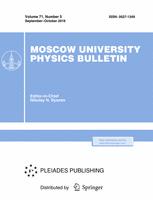Iron and iron–cobalt nanostructures that were synthesized in polymer ion-track membranes have been studied via Mössbauer spectroscopy combined with raster electron microscopy, energy-dispersion analysis, and X-ray diffraction data. The obtained nanostructures are single-phase bcc Fe$_{1 – x}$Co$_x$ nanotubes with a high degree of polycrystallinity, whose length is 12 μm; their diameter is 110 ± 3 nm and the wall thickness is 21 ± 2 nm. Fe$^{2+}$ and Fe$^{3+}$ cations were detected in the nanotubes, which belong to iron salts that were used and formed in the electrochemical deposition. The Fe nanotubes exhibit eventual magnetic moment direction distributions of Fe atoms, whereas Fe/Co nanotubes have a partial magnetic structure along the nanotube axis with a mean value of the angle between the magnetic moment and nanotube axis of 34$^{\circ} \pm 2^{\circ}$. Substituting the Fe atom with Co in the nearest environment of the Fe atom within the Fe/Co structure of nanotubes leads to a noticeable increase in the hyperfine magnetic field at the $^{57}$Fe nuclei (by 8.7$\pm$ 0.4 kOe) and to a slight decrease in the shift of the Mössbauer line (by 0.005$\pm$0.004 mm/s).
61.46.-w Structure of nanoscale materials
75.47.Np Metals and alloys
$^{1,3}$Department of Physics, Moscow State University, Moscow, 119991 Russia
$^2$Department of Physics and Technology, Eurasian National University, Astana, 010008 Kazakhstan



